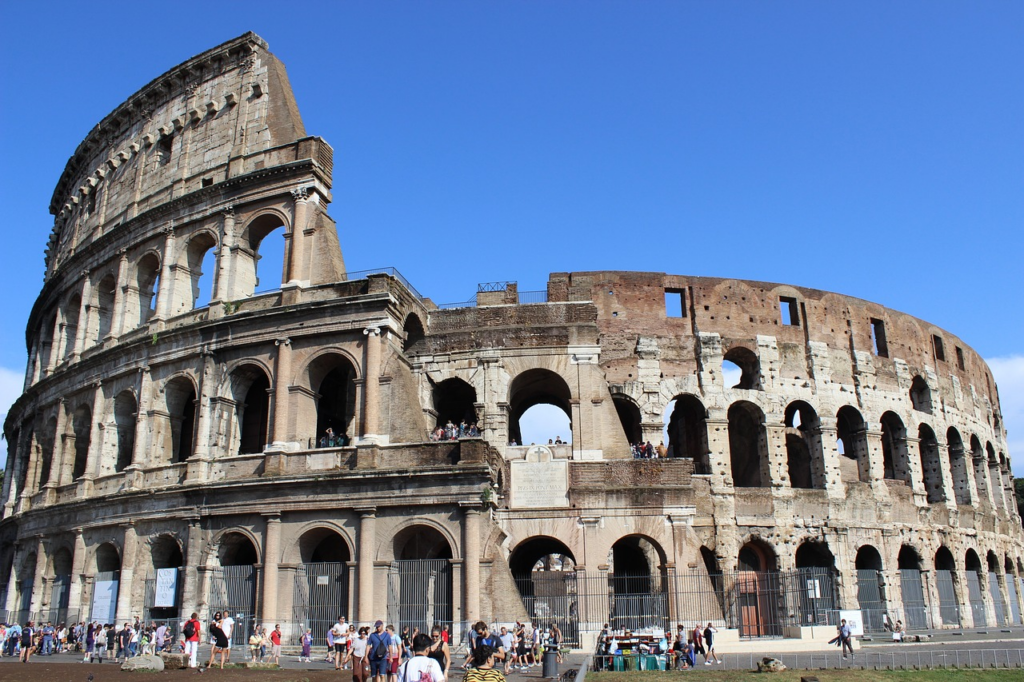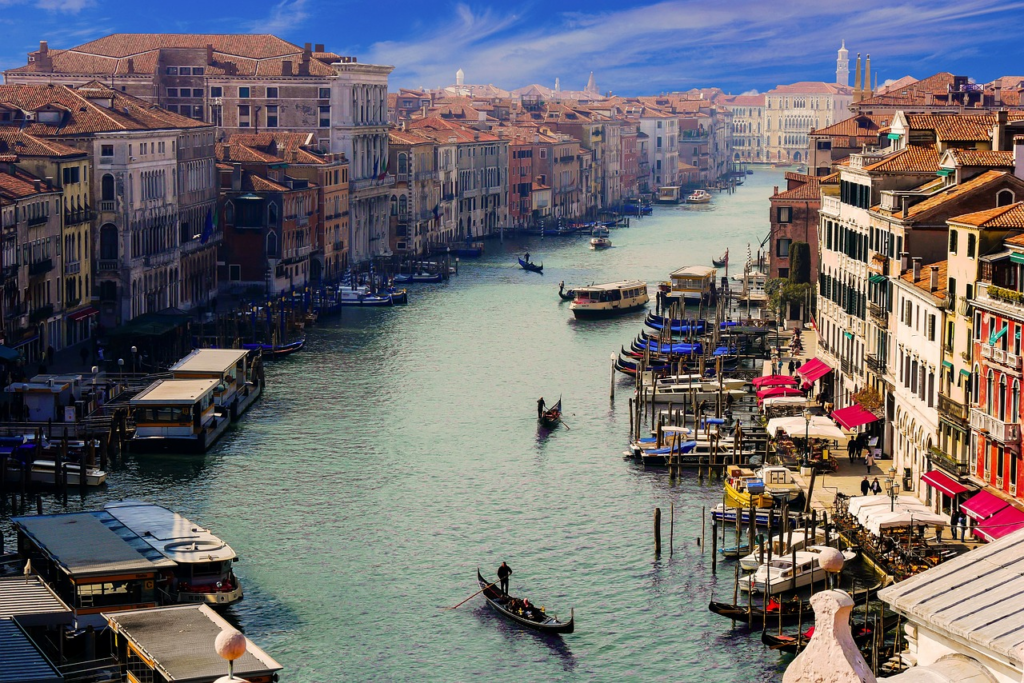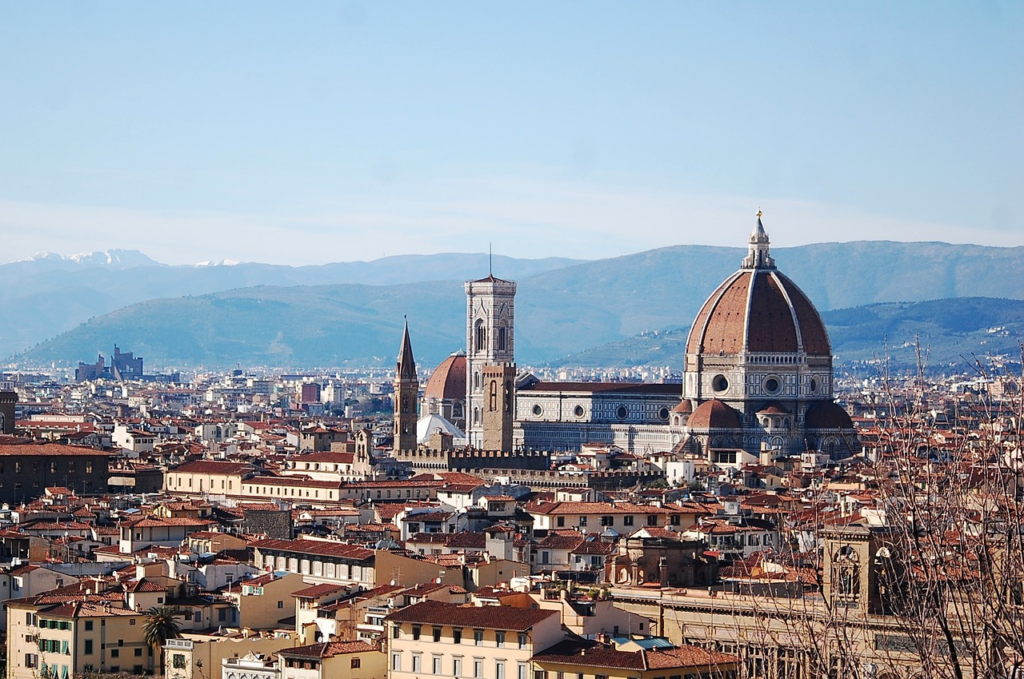Italy is a destination that enchants millions of tourists every year, whether for its historical monuments, rich culture, delicious cuisine or stunning landscapes. If you're planning a trip to this incredible country, it's important to prepare properly to ensure an unforgettable experience.
How much does a trip to Italy cost?
Traveling to Italy can be an affordable or luxurious experience, depending on your choices and preferences. The main costs to consider include airfare, accommodation, meals, local transportation, tickets to tourist attractions and extra expenses.
- Airline tickets: Airline ticket prices can vary according to the time of year, how far in advance you buy and the airline you choose. In general, it is advisable to research and book in advance to get the best rates.
- Accommodation: Accommodation in Italy ranges from luxury hotels to budget hostels. Rates also depend on location and time of year. You can find options to suit your budget via online booking sites.
- Food: Italian cuisine is famous all over the world, and trying the local dishes is an essential part of the trip. Food costs can vary, but you can find delicious meals at affordable prices in local trattorias and pizzerias.
- Local transport: To get around Italian cities, you can choose to use public transport, such as buses, the metro or streetcars, or rent a car. Costs vary according to the means of transportation chosen and the distance traveled.
- Tickets for tourist attractions: Many of Italy's main attractions, such as the Colosseum in Rome, the Leaning Tower of Pisa and the Vatican, charge entrance fees. It's important to include these costs in your financial planning.
- Extra expenses: Don't forget to set aside money for unforeseen expenses, such as souvenir shopping, tips and other recreational activities.
When calculating the total cost of the trip, take all these aspects into account to ensure that you have a realistic budget.

What do Brazilians need to enter Italy?
For Brazilians wishing to enter Italy as tourists, there are some requirements and necessary documents that must be observed before the trip. Here are the main items a Brazilian needs to enter Italy:
- Valid passport: All Brazilians wishing to enter Italy must have a valid passport. Make sure your passport is valid for at least six months beyond the end of your stay in Italy.
- Tourist visa: Brazilians do not need a visa to enter Italy as tourists, as long as their stay is less than 90 days. This visa-free period applies to trips for tourism, business, family visits and transit. However, it is necessary to present documents proving the purpose of the trip, such as a return ticket and accommodation reservations.
- Travel insurance: Although it is not compulsory, it is highly recommended that you take out travel insurance to cover medical and hospital expenses during your stay in Italy. Comprehensive travel insurance can help protect you in the event of medical emergencies, accidents or other unforeseen situations.
- Proof of financial resources: Although it is not a formal requirement, the immigration authorities may ask for proof of sufficient financial resources to cover the costs of your stay in Italy. This can include recent bank statements, valid credit cards or cash.
- Other documents: In addition to the documents mentioned above, it is important to have other documents at hand that may be requested by the immigration authorities, such as a return ticket, proof of accommodation booking and travel itinerary.
It's important to note that entry requirements in Italy can vary depending on the purpose of your trip and the immigration policies in force at the time of your visit. It is therefore always advisable to check the up-to-date requirements before you travel and make sure you have all the documents you need for a smooth entry into the country.
What amount is required to enter Italy?
When entering Italy as a tourist, there is no specific amount required by the immigration authorities. However, it is important to be prepared to demonstrate that you have sufficient financial resources to cover the costs of your stay in the country during the planned period.
Although there is no exact amount established, the immigration authorities may ask you to provide proof of adequate financial resources to cover expenses such as accommodation, food, transportation and other expenses related to your stay in Italy.
The amount required may vary depending on the length of your stay, your expected standard of living during the trip and other factors. Generally, immigration authorities seek to ensure that visitors have sufficient means to support themselves while in the country, thus avoiding overloading social welfare systems.
Although it is not necessary to present a specific amount of cash, it is advisable to have a reasonable amount of euros with you, as well as valid credit or debit cards, as part of your available financial resources.
How do you prepare to travel to Italy?
Preparing properly for a trip to Italy can make all the difference to your experience. Here are some tips to make sure everything goes smoothly:
- Planning ahead: Research the destinations you want to visit, book tickets and accommodation in advance and make a detailed itinerary to make the most of your time in Italy.
- Learn the basics of the language: Although many Italians speak English, learning a few basic words and phrases in Italian can make communication easier and show respect for the local culture.
- Prepare for the weather: Check the weather forecast for the period of your trip and pack accordingly. Don't forget to pack comfortable clothes and shoes suitable for hiking.
- Take care of your health: Make sure you have all your vaccinations up to date and take your regular medication with you. Comprehensive travel insurance is also essential to cover any medical expenses during your stay.
- Respect local traditions: Familiarize yourself with Italian traditions and customs, such as meal times, greetings and etiquette in public places. Respecting the local culture contributes to a more harmonious and enriching experience.
With careful planning and a little preparation, your trip to Italy has everything it takes to be a memorable experience full of unforgettable moments.
What can't you miss in Italy?
Italy is a country full of historical, cultural, gastronomic and natural treasures. There are countless unmissable attractions that form part of Italy's rich heritage. Here are some of the most famous and important sights you can't miss when visiting Italy:
Colosseum, Rome
The Colosseum, located in the city of Rome, is one of the most iconic and emblematic monuments of the ancient world and one of the most visited tourist destinations in Italy. Also known as the Flavian Amphitheatre, the Colosseum is an imposing stone structure that dates back to the 1st century AD and is a symbol of the power and grandeur of the Roman Empire.
Built during the reign of the Flavian emperors, especially under the rule of Vespasian and his son Titus, the Colosseum was conceived as a venue for public entertainment, including gladiatorial games, wild animal hunts, mock naval battles and other forms of spectacle. With a capacity of around 50,000 spectators, the Colosseum was a marvel of Roman engineering, with its complex and innovative structure.
The architecture of the Colosseum is impressive in itself. Its exterior façade is made up of a series of Doric, Ionic and Corinthian arches and columns, which reflect the skill and mastery of the Roman builders. The interior of the Colosseum was equally impressive, with a central arena where the events took place and an intricate network of underground tunnels, passages and chambers that were used to house gladiators, animals and equipment.
Vatican City and St. Peter's Basilica, Rome
The Vatican, officially known as the Vatican City State, is the smallest independent country in the world and is widely recognized as the spiritual and administrative center of the Catholic Church. Located within the city of Rome, Italy, the Vatican is home to the Pope and many of the Roman Catholic Church's most important institutions.
One of the most prominent attractions within the Vatican is the majestic St. Peter's Basilica, an architectural masterpiece and an important pilgrimage site for millions of faithful around the world.
- Points of Interest: In addition to St. Peter's Basilica, the Vatican is home to many other places of interest, including the Vatican Museums, which contain a vast collection of art and historical artifacts, and the Sistine Chapel, famous for Michelangelo's frescoes on the ceiling.
- Pilgrimage: For Catholics, a visit to the Vatican is often considered a meaningful spiritual pilgrimage, offering the opportunity to attend mass, receive the Pope's blessing and experience the rich religious and cultural tradition of the Catholic Church.
Tower of Pisa, Pisa
The Leaning Tower of Pisa, located in the city of Pisa in the Tuscany region of Italy, is one of the most famous and recognizable monuments in the world. The tower has gained fame for its characteristic slope, which has made it an iconic symbol not only of Pisa, but also of Italy as a whole.
- The Leaning Tower of Pisa is a masterpiece of the Romanesque style, with a circular structure made up of eight floors of decorative arcades.
- Its prominent tilt is the result of an uneven subsidence of the ground on which it was built, which caused a gradual shift in the tower's center of gravity.
- The tower is approximately 56 meters high on the highest side and 55.86 meters on the lowest side, with a slope of around 3.97 degrees.
Florence
Florence, the capital of Italy's Tuscany region, is a city steeped in beauty, history and culture. Known as the cradle of the Italian Renaissance, Florence was home to some of the most influential figures in the history of art and literature, such as Leonardo da Vinci, Michelangelo, Dante Alighieri and Nicolaus Machiavelli.
- Florence is famous for its stunning Renaissance architecture, with well-preserved historic buildings, elegant squares and narrow streets full of charm.
- The Cathedral of Santa Maria del Fiore, with its majestic dome designed by Brunelleschi, is Florence's most iconic landmark. In addition, the Baptistery of St. John and Giotto's Campanile, all located in Piazza del Duomo, form an impressive architectural ensemble.
- Florence's museums are home to some of the world's most important works of art, including the Uffizi Gallery, which has a vast collection of Renaissance paintings, and the Accademia Gallery, where Michelangelo's famous "David" sculpture is on display.
Venice Canals
Venice's canals are one of the most distinctive and enchanting features of this unique city in northeastern Italy. Venice is often called the "City of Water" or the "Venice of the Canals", and for good reason - the canals play a central role in the life and identity of this ancient city.
- The history of Venice's canals dates back more than a thousand years, when the region's inhabitants began building structures on the marshy islands of the Venetian lagoon.
- The need for transportation and communication between the islands of Venice led to the creation of an intricate network of canals that became the backbone of the city.

Amalfi Coast
This stunning coastline in southern Italy is famous for its dramatic landscapes, picturesque villages and turquoise sea. Positano, Amalfi and Ravello are some of the most charming towns to visit in the region.
Pompeii and Herculaneum
Explore the fascinating ruins of Pompeii and Herculaneum, Roman cities buried by the eruption of Mount Vesuvius in 79 A.D. These archaeological sites offer a unique insight into daily life in the Roman Empire.
Cinque Terre
This picturesque stretch of the Italian coast is known for its five colorful villages built on cliffs by the sea. Walk along the panoramic trails that connect the villages and enjoy the breathtaking views of the Mediterranean Sea.
These are just a few of the many unmissable attractions that Italy has to offer. Each region of the country has its own distinct beauty and charm, ensuring that there is something for all tastes and interests. When visiting Italy, take time to explore its rich history, culture, gastronomy and stunning landscapes.
See also: How long does a round-the-world cruise take? See the duration
April 1st, 2024

She has a degree in Literature - Portuguese/English, and is the creator of the Escritora de Sucesso website. As a writer, she seeks to expand everyone's knowledge with relevant information on various subjects. At Trend-Topics, she brings news and content ranging from entertainment to the country's economic situation.






